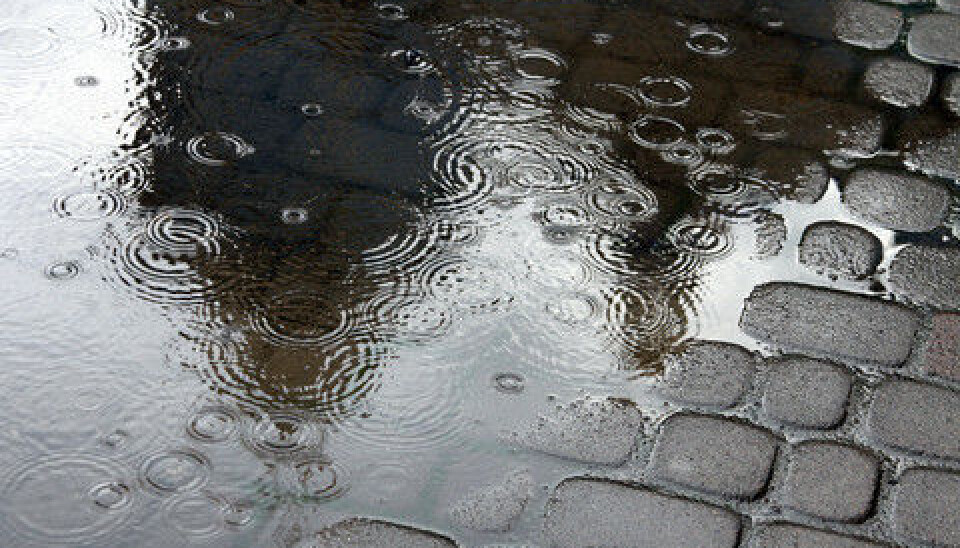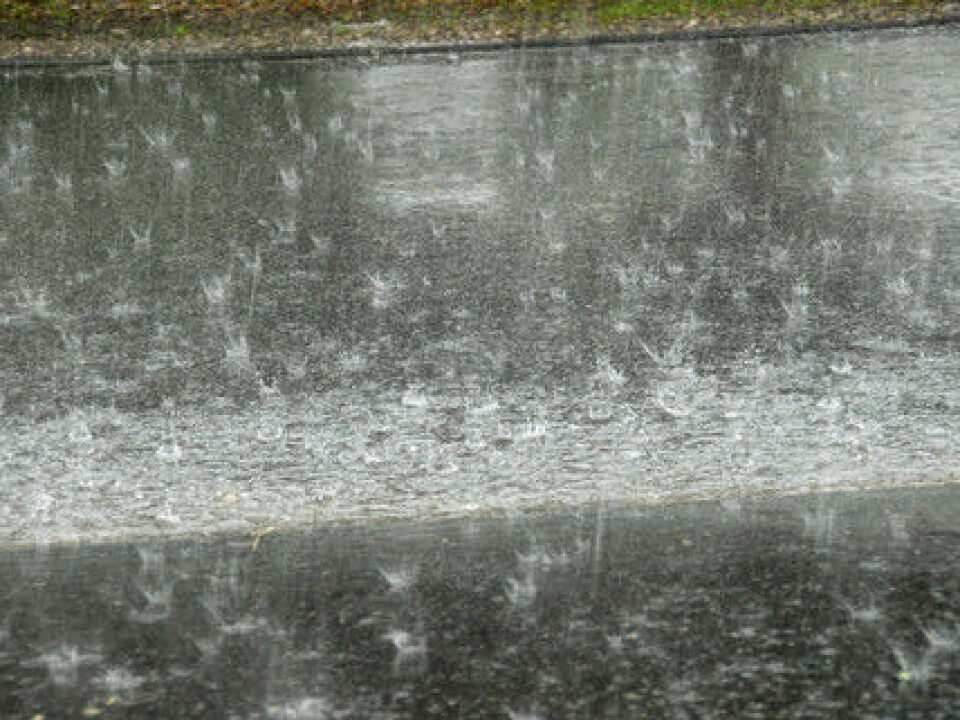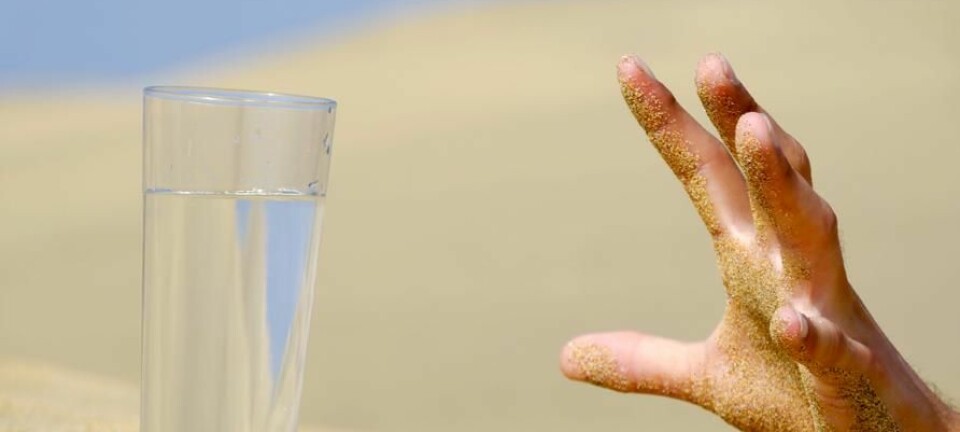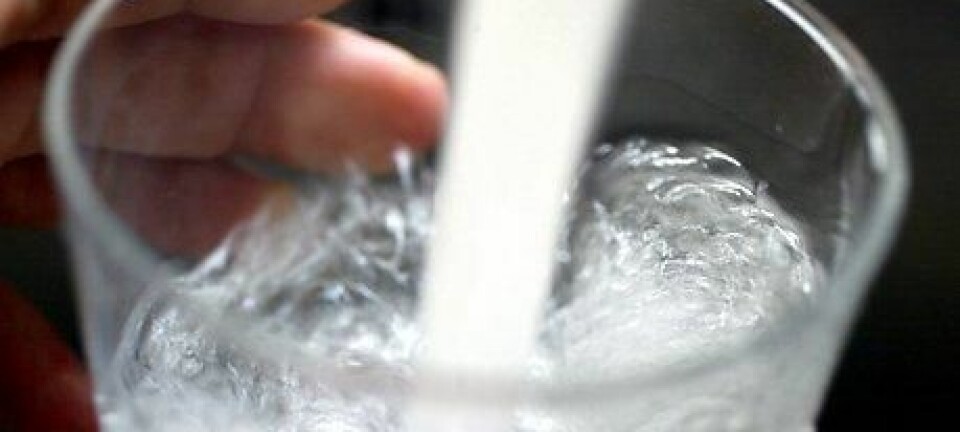
The best way to remove substances from rainwater
Is rainwater clean? Can it be harmful to aquatic life? And what happens when rainwater from cities is discharged to the aquatic environment?
An effective discharge of rainwater depends to a very high degree on the land use.
If, for example, we compare two equally large areas, one could be field and the other could be city, then the rainwater from the field will take days to reach the nearest receiving water body (river or sea), while the water from the city will only need a few hours to travel the same distance.
In the field, the rainwater will infiltrate into the soil and is then drained to the nearest receiving water body, which thus receives a steady supply of water.
In the cities, on the other hand, there is a large proportion of paved areas such as rooftops, terraces and parking grounds, which all discharge the rainwater directly into the gutter and then to the receiving water body.
Animals and plants torn away by the flood

This rapid runoff of rainwater prevents flooding in city centres, but it also means that the receiving water body now receives all the rainwater within only a few hours.
Very few waterways can cope with such extreme quantities of water. A common consequence is that animals and plants are torn away by the flood and the riverbanks erode.
To avoid the harmful effect of the severe water flow, retention ponds were built in the ‘70s as a buffer between urban and aquatic environments.
All retention ponds are equipped with a sort of water brake, which limits the flow from the pond to a more natural level. This enables the water to be drained quickly from the cities to avoid flooded roads and basements, while at the same time retaining the water in the ponds, thus avoiding the hydraulic problems in the receiving water body.
The rainwater needs to be cleaned
Although it might appear that rainwater is clean, it does contain a great variety of substances. These substances, including eroded particles from cars and other surfaces, are derived from the atmosphere, roofs and parking grounds.
The type and concentration of substances in the runoff vary depending on the catchment type. The cleanest water comes from natural areas and villages, while the most polluted water comes from city centres and industrial areas.
The polluted substances in rainwater are starting to become more important in relation to water quality in freshwater areas. This is due to:
- An increased proportion of paved areas.
- An increased amount and intensity of precipitation as a result of climate change.
- The fact that wastewater treatment in rural areas has improved, which results in lower concentrations than before.
Because of the EU Water Framework Directive (WFD), all water bodies in Denmark (and other European countries) need to achieve a good ecological status in the coming years.
This means that animals, plants and the physical condition only must be slightly influenced by human activity. One way to meet the WFD requirements is to remove the polluting substances from the runoff before it is discharged to the aquatic environment.
A new perspective on retention ponds
Up to now, retention ponds have usually been designed only to retain and delay water.
So the big question is now whether existing retention ponds can also remove nutrients and heavy metals from the rainwater and whether there are certain designs that are more efficient than others.
At the University of Southern Denmark we have, in collaboration with Arwos (the supply company in the municipality of Aabenraa) examined more than 60 of the 100 retention ponds in the Aabenraa area.
Preliminary results have shown that it is limited how efficient the ponds are in terms of pollutant removal. However, most of the substances that are removed from the ponds are particles.
Too many dissolved substances are discharged
The dissolved substances, on the other hand, will be flushed directly to the receiving water body without any significant removal. During the summer months, more dissolved substances are discharged than added, because plant litter and other organic material is converted by microorganisms on the sediment and then released into the water phase.
The conclusion of our studies is therefore that particles can be retained, while dissolved substances pass unhindered. This is a major problem, especially for nutrients, since at least half of the discharged phosphorus is in dissolved form.
Algal growth in Danish lakes is often limited by the amount of phosphorus, so the less phosphorus is discharged into the aquatic environment, the less algal growth will be seen during summer.
Improving the removal efficiency
Our examination of the ponds has also clearly outlined some areas of improvement. This may be quite simple things, but with great importance.
It is for instance essential that inlets and outlets are as far apart as possible to achieve the optimal removal efficiency. Our results also show that large ponds are more efficient than small ones. These factors contribute towards prolonging the retention time in the pond, thus allowing particles to settle.
This may sound obvious, but it isn’t until now that the supply companies are starting to take notice of these factors.
Testing filters for efficiency
The University of Southern Denmark has teamed up with Arwos to set up a test pond for removing dissolved substances, especially phosphorus. This pond is a sedimentation pond with a filter zone, which means that the water passes through a filter material before being discharged to the receiving water body.
We have decided to test two kinds of filter material – sand and crushed concrete – for removal efficiency. Filter sand is already being used in many retention ponds, but it does not remove much dissolved phosphorus. On the other hand, crushed concrete, which is a waste product from the demolition of buildings, is highly effective.
Our preliminary laboratory tests have shown that it removes up to 90 percent of the dissolved phosphorus. Furthermore, our tests indicate that crushed concrete can remove heavy metals.
The water is neutralised
Using crushed concrete does, however, present another challenge: it becomes very alkaline when it comes into contact with water, which means that water that has passed through the concrete filter ends up with a pH of 10-12. This is enough to harm the surrounding animal and plant life.
Unfortunately, it is not possible to reduce the pH of the concrete, since the high pH is one of the factors that make concrete so effective.
It is, however, possible to neutralise the water using acid, aeration or infiltration through pH-neutralising materials, so that the water reaches neutral pH levels before it is discharged to the receiving water body.
If the results from our test pond show that crushed concrete is an effective filter material, it could end up as a new, effective and innovative environmental technology solution for ensuring the quality of our aquatic environment.
-----------------------
Read the Danish version of this article at videnskab.dk
Translated by: Dann Vinther











